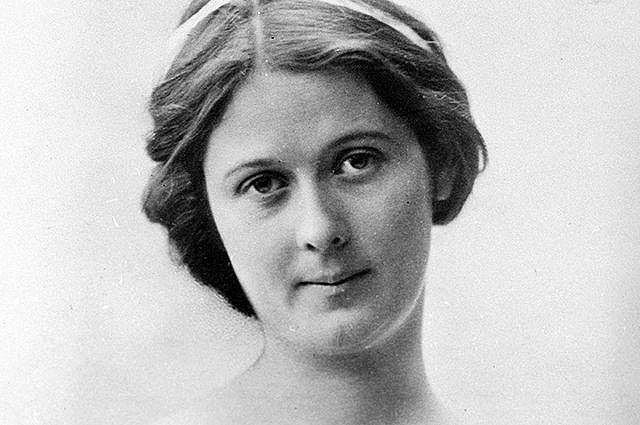Isadora Duncan – a story of a life in dance and love
 Isadora Duncan became famous for expanding the boundaries of dance and creating her own unique style, which is called “sandal dancing”.
Isadora Duncan became famous for expanding the boundaries of dance and creating her own unique style, which is called “sandal dancing”.
She was a strong woman whose professional life was more successful than her personal one. But, despite all the difficulties, Isadora was able to maintain her fortitude and desire to dance.
The content of the article:
- Childhood
- Youth
- Great sandal
- Isadora’s tragedies
- Way to Russia
- Ayselora and Yesenin
- Goodbye, I’m on my way to glory
Isadora Duncan’s Beginning
The future famous dancer was born in 1877 in San Francisco in the family of a banker, Joseph Duncan. She was the youngest child in the family, and her older brothers and sister also linked their lives with dancing.

Isadora’s childhood was not easy: as a result of banking fraud, her father went bankrupt – and left the family. Mary Isadora Gray had to raise four children on her own. But, despite all the difficulties, music always sounded in their house, they always danced and put on performances based on ancient works.

Therefore, it is not surprising that, having grown up in such a creative atmosphere, Isadora decided to become a dancer. The girl began to dance at the age of two, and at the age of six she began to teach dancing to neighboring children – this is how the girl helped her mother. At the age of 10, Angela (the name of Isadora Duncan) decided to leave school as unnecessary, and devote herself entirely to studying dance and other areas of art.
Video: Isadora Duncan
Discoveries of youth – the “birth” of the great sandals
In 1895, 18-year-old Duncan moved with her family to Chicago, where she continued to dance in nightclubs. But her performances were strikingly different from the numbers of other dancers. She was a curiosity: dancing barefoot and in a Greek tunic amazed the audience. For Isadora, classical ballet was just a complex of mechanical body movements. The girl needed more from the dance: she tried to convey feelings and emotions through dance movements.

In 1903, Isadora and her family traveled to Greece. For the dancer, this was a creative pilgrimage: Duncan found inspiration in antiquity, and the dancing Hetero became her ideal. It was this image that formed the basis of the famous “Duncan” style: barefoot performances, a translucent tunic and loose hair.
In Greece, at the initiative of Duncan, construction began on a temple for dancing classes. The dancer’s performances were accompanied by a choir of boys, and in 1904 she toured Vienna, Munich and Berlin with these numbers. And in the same year she became the head of a dance school for girls located near Berlin in Grunewald.

Isadora’s dance is more than life
Isadora’s dance style was distinguished by simplicity and amazing plasticity of movements. She wanted to dance everything from music to poetry.
“Isadora dances everything that others say, sing, write, play and paint, she dances Beethoven’s Seventh Symphony and the Moonlight Sonata, she dances Botticelli’s Primavera and Horace’s poems.”– that’s what Maximilian Voloshin said about Duncan…
For Isadora, dance was a natural state, and she dreamed, together with like-minded people, of creating a new person for whom dancing would be more than natural.

The work of Nietzsche had a great influence on her worldview. And, impressed by his philosophy, Duncan wrote the book “Dance of the Future.” Isadora believed that everyone should be taught to dance. At the Grunewalde school, the famous dancer not only taught her pupils her art, but actually supported them. This school operated until the outbreak of the First World War.
Tragedies in the life of Isadora Duncan
If everything went well for Isadora in her professional career, then it was somewhat more difficult with the arrangement of her personal life. Having seen enough of the family life of her parents, Duncan adhered to feminist views, and was in no hurry to start a family. Of course, she had affairs, but the star of the dance scene was not going to get married.
In 1904, she had a brief affair with the modernist director Gordon Craig, from whom she gave birth to a daughter, Deirdre. She later had a son, Patrick, by Paris Eugene Singer.

But a terrible tragedy happened to her children: in 1913, Duncan’s son and daughter were killed in a car accident. Isadora became depressed, but she petitioned for a chauffeur because he was a family man.
She later gave birth to another son, but the child died a few hours after birth. From a desperate step, Isadora was stopped by her pupils. Duncan adopted six girls, and she treated all her pupils like her own children. Despite her fame, the dancer was not wealthy. She invested almost all of her savings in the development of dance schools and charity.
Way to Russia
In 1907, the famous and talented Isadora Duncan performed in St. Petersburg. At her performances, among the guests were members of the imperial family, as well as Sergei Diaghilev, Alexander Benois and other famous people of art. Then Duncan met Konstantin Stanislavsky.

In 1913, she again toured Russia, in which she had many fans. Even studios of free and plastic dance began to appear.
In 1921, Lunacharsky (People’s Commissar of Education of the RSFSR) suggested that she open a dance school in the USSR, promising full support from the state. New prospects opened up for Isadora Duncan, she was happy: at last she could leave bourgeois Europe and realize her dream of creating a special dance school. But everything turned out to be not so simple: despite financial support, Isadora had to solve many everyday problems herself, and she obtained the bulk of the finances on her own.
Isadora and Yesenin
Then, in 1921, she met the already established poet Sergei Yesenin. Their relationship caused a lot of conflicting opinions in society, many people did not understand – what did the world famous Isadora Duncan find in a simple boy Sergei Yesenin? Others were perplexed – what seduced the young poet in a woman who was 18 years older than him? When Yesenin read her poems, as Duncan later recalled, she did not understand anything about them – except that it was beautiful, and they were written by a genius.

And they communicated through an interpreter: the poet did not know English, she – Russian. The romance that broke out developed rapidly: soon Sergei Yesenin moved to her apartment, they called each other “Izador” and “Yezenin”. Their relationship was very stormy: the poet had a very hot-tempered, unrestrained character. As many noted, he loved Duncan with a strange love. Very often he was jealous of her, drank, sometimes raised his hand, left – then returned, asked for forgiveness.
Isadora’s friends and fans were outraged by his behavior, she herself believed that he just had a temporary mental disorder, and soon everything would be fine.
Goodbye friends, I’m on my way to glory!
Unfortunately, the dancer’s career did not develop as well as Duncan expected. And she decided to go abroad. But in order for Yesenin to be able to leave with her, they needed to get married. In 1922, they legalized the relationship and took the double surname Duncan-Yesenin.

They traveled around Europe for a while, and then returned to America. Isadora tried to arrange a poetic career for Yesenin. But the poet suffered more and more from depression and made scandals.
The couple returned to the USSR, but later Duncan left for Paris, where she received a telegram from Yesenin, in which he reported that he had fallen in love with another woman, got married and was happy.
Isadora continued to engage in dancing and charity work. And she never said anything bad about Sergei Yesenin.

The life of the famous Duncan ended tragically: she suffocated herself with her scarf, which accidentally fell into the axle of a car wheel while she was taking a walk. Before the car started, she exclaimed to those who were accompanying them: “Goodbye, friends, I’m on my way to glory!”
For Isadora Duncan, dance was not just a mechanical movement of arms and legs, it had to become a reflection of a person’s inner world. She wanted to create a “dance of the future” – it was supposed to become natural for people, their inspiration.
The philosophy of the great dancer was continued: her students became the keepers of the traditions of free plastic dance and the creativity of the beautiful and talented Isadora Duncan.
The Colady.ru website thanks you for taking the time to get acquainted with our materials!
We are very pleased and important to know that our efforts are noticed. Please share your impressions of what you read with our readers in the comments!
What to give a friend?
Gift Certificate! You can give it to your loved one or use it yourself.
And we also give away a certificate for 3000 rubles every month. among new email subscribers. Subscribe!
Select a certificate in the store
Visit Bologny for more useful and informative articles!




